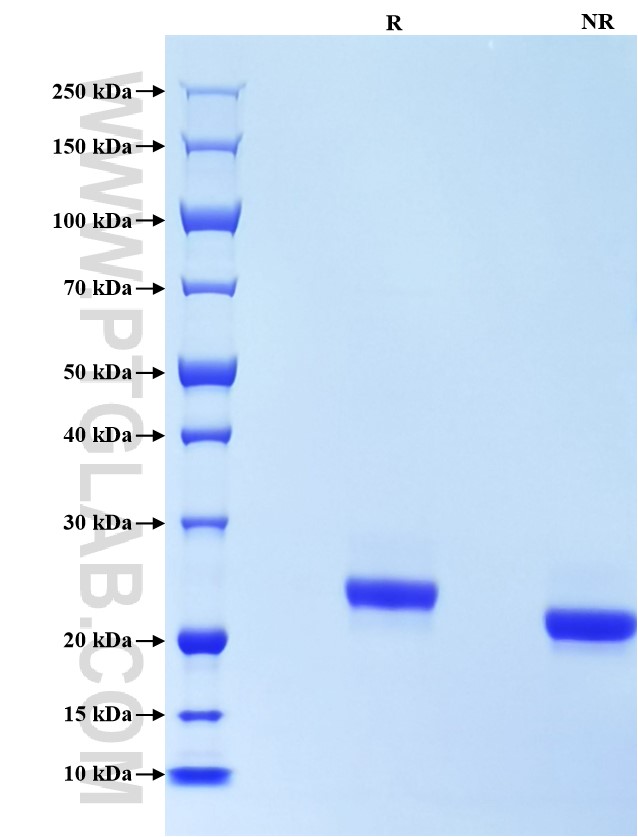Recombinant Mouse Lipocalin-2/NGAL protein (His Tag)
种属
Mouse
纯度
>90 %, SDS-PAGE
标签
His Tag
生物活性
未测试
验证数据展示
产品信息
| 纯度 | >90 %, SDS-PAGE |
| 内毒素 | <0.1 EU/μg protein, LAL method |
| 生物活性 | Not tested |
| 来源 | HEK293-derived Mouse Lipocalin-2 protein Gln21-Asn200 (Accession# P11672) with a His tag at the C-terminus. |
| 基因ID | 16819 |
| 蛋白编号 | P11672 |
| 预测分子量 | 22.3 kDa |
| SDS-PAGE | 23-25 kDa, reducing (R) conditions |
| 组分 | Lyophilized from 0.22 μm filtered solution in PBS, pH 7.4. Normally 5% trehalose and 5% mannitol are added as protectants before lyophilization. |
| 复溶 | Briefly centrifuge the tube before opening. Reconstitute at 0.1-0.5 mg/mL in sterile water. |
| 储存条件 |
It is recommended that the protein be aliquoted for optimal storage. Avoid repeated freeze-thaw cycles.
|
| 运输条件 | The product is shipped at ambient temperature. Upon receipt, store it immediately at the recommended temperature. |
背景信息
Neutrophil gelatinase-associated lipocalin (NGAL) also known as Lipocalin-2 (LCN2), is a secreted glycoprotein that belongs to the lipocalin protein family. Several roles of NGAL was identified, including iron trafficking, chemotactic, and promote cell differentiation and proliferation. NGAL was originally found in neutrophils, and expressed in tissues containing renal, uterus, liver, spleen, as well as cardiomyocytes, neurons and immune cells. NGAL is a significant biomarker of cardiovascular diseases, ischemic stroke, acute renal injury, inflammation and metabolic diseases.
参考文献:
1. Bauvois B. et al. (2018). Cancers (Basel). 18;10(9). 2. Buonafine M. et al. (2018). Clin Sci (Lond). 132(9):909-923. 3. Abella V. et al. (2015). Biomarkers. 20(8):565-71. 4. Devarajan P. et al. (2008). Scand J Clin Lab Invest Suppl. 241:89-94.
